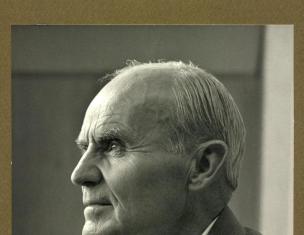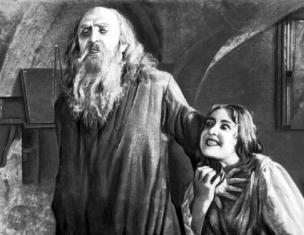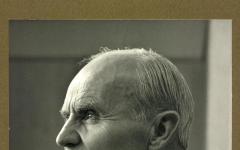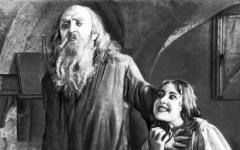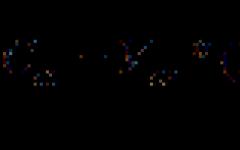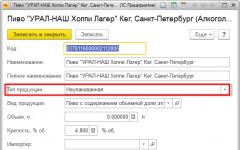(Slide 1)
. (Slide 2)
Let's start with Democritus . (Message 1 Democritus)
(Slide 3)
radioactivity.
- 1905 Einstein's equation
. (Message 2 Becquerel)
(Slide 5)
(Slide 6)
Information sheet (Slide 7, 8)
Let's write it down in your notebook
(Slide 9).
Slide 10
Answer the questions (Slide 11)
Alpha Vetta Gamma(Slide 12-14)
.(Slide 12)
.(Slide13)
.(Slide 14)
.(Synopsis paragraph 1)
notes (item 20).
Report about D. Thomson(Slide 15)
(Slide 17.18)
(Slide 19)
Answer the questions:
? (Slide 21)
What does an atom look like now?
(Slide 26)
. (Slide 27)
IV. Consolidation.
. (Slide 28)
VI. Homework. (Slide 29)
Bibliography
V. Learning new material.
Today we begin to study the fourth chapter of our textbook, it is called “Structure of the atom and the atomic nucleus. Using the energy of atomic nuclei.”
The topic of our lesson is “Radioactivity as evidence of the complex structure of atoms. Models of atoms. Rutherford's experience." (Slide 1)(write down the date and topic of the lesson in your notebook). We will use the notes that are on your tables. We introduced the concept of “atom” back in the 8th grade, as well as in chemistry lessons. Let's remember him.
The assumption that all bodies consist of tiny particles was expressed by the ancient Greek philosopher Democritus 2500 years ago. "Nothing exists but atoms" . (Slide 2)
Nowadays, for few people the reality of atoms is less obvious than the movement of the Earth around the Sun. Everyone has an instinctive idea of something very small associated with an atom. What is the meaning of the concept of atom? modern physics? What does he look like?
Let's start with Democritus . (Message 1 Democritus)
I would like to remember important dates in history (Slide 3)
- 1. 1895 V.K. X-ray told the world about X-rays.
- 1896 - discovery of radioactivity.
1898 - Pierre and Marie Curie call this property radioactivity.
- 1905 Einstein's equation
The most striking evidence of the complex structure of atoms was the discovery of the phenomenon of radioactivity made by the French physicist Henri Becquerel in 1896 (Slide 4)
. (Message 2 Becquerel)
Radioactivity has appeared on earth since its formation, and man throughout the history of the development of his civilization has been under the influence of natural sources of radiation. The Earth is exposed to background radiation, the sources of which are radiation from the Sun, cosmic radiation, and radiation from radioactive elements lying in the Earth. (Slide 5)
Film fragment (The Becquerel Experience) (Slide 6)
Pierre Curie and Maria Skladovskaya-Curie became interested in Becquerel's works.
Information sheet Film fragment (Works by Pierre and Marie Curie) (Slide 7, 8)
Let's write it down in your notebook “radioactivity” - (Latin) radio - emit, astivus - effective.
Subsequently, it was found that all chemical elements with an atomic number greater than 83 are radioactive. (Slide 9). Look at the periodic table.
What is radioactive radiation?
In 1899, under the leadership of the English scientist E. Rutherford, an experiment was carried out that made it possible to detect the complex composition of radioactive radiation. Slide 10
Answer the questions (Slide 11)
- What role did the magnetic field play?
- What was the source of the radiation?
- What types of particles were found?
- Give them a description according to the plan.
Alpha Vetta Gamma(Slide 12-14)
Positively charged particles were called alpha particles, negatively charged ones were called beta particles, and neutral ones were called gamma quanta (Fig. 2). Some time later, as a result of studying some physical characteristics and properties of these particles ( electric charge, mass, penetrating power) it was possible to establish that gamma quanta or rays are short-wave electromagnetic radiation, propagation speed electromagnetic radiation the same as for all electromagnetic waves - 300,000 km/s. Gamma rays penetrate hundreds of meters into the air. .(Slide 12)
Beta particles are a stream of fast electrons flying at speeds close to the speed of light. They penetrate into the air up to 20 m. .(Slide13)
Alpha particles are streams of nuclei of helium atoms. The speed of these particles
20,000 km/s, which is 72,000 times higher than the speed of a modern aircraft (1000 km/h). Alpha rays penetrate up to 10 cm into the air .(Slide 14)
So, the phenomenon of radioactivity, i.e. Spontaneous emission of alpha, vetta and gamma particles by matter, along with other experimental facts, served as the basis for the assumption that the atoms of matter have a complex composition.
If Becquerel's experiments proved the complex composition of the atom, then what does it look like?
Back in 1865, Joseph Londschmidt found that the size of atoms is approximately 10 -10 cm, and the mass of a hydrogen atom is approximately 10-27 g .(Synopsis paragraph 1)
We recently studied the topic “Spectra”, “Dispersion of Light”. Please note the dates and facts in notes (item 20).
The explanation of the spectra must be sought in the properties of atoms. This is what D. Maxwell and L. Boltzmann did.
On its way, the atomic theory encountered many obstacles while making its way and was finally established in the 19th century. A bright mark in the study of the structure of the atom was left by D.D. Thomson.
Report about D. Thomson(Slide 15)
According to him, the atom looked like this (Slide 17.18)
It was 1904. And back in 1903, the following was known about the electron:
(Note p5) Write it down in your notebook.
This model was tested by the English physicist E. Rutherford in 1906
Information note about Rutherford.(Slide 19)
Video clip “The Rutherford Experience” (Slide 20)
Answer the questions:
- What unexpected results did the scientist get?
- Why couldn’t the experimental results be explained based on Thomson’s model?
- How did Rutherford himself explain the result of the deflection of alpha particles?
The scientist described the deviations of some particles at angles greater than 90 degrees as follows: ? (Slide 21)“It was as incredible as if you fired a 15-inch shell at a piece of tissue paper and it bounced back and hit you again.”
What does an atom look like now? (Slide 22-25) and summary p6.
What is the significance of this discovery? (Slide 26)
- This discovery was enormous in its significance. Impressed by these events, V. Bryusov wrote:
“Perhaps these electrons are Worlds, where there are five continents, Arts, knowledge, wars, thrones And the memory of forty centuries! Still, perhaps, every atom is a Universe, where there are a hundred planets; Everything that is here is there, in a compressed volume, But also what is not here.”
- Based on this model, it was possible to explain the physical meaning of the distribution of chemical elements in the D.I. table. Mendeleev. The number of positive charges in the nucleus and the number of electrons coincide with the atomic number of the chemical element.
- Thus the line was drawn in the dispute about the indivisibility of the atom
A. Einstein compared Rutherford's discovery to the discovery of fire . (Slide 27)
hell?[? `?g??? poisonous number of a chemical element.
- Thus the line was drawn in the dispute about the indivisibility of the atom
A. Einstein compared Rutherford's discovery to the discovery of fire . (Slide 27)
IV. Consolidation.
Checking the assimilation of new material.
- Demonstration of a slide with questions on the explained material.
3. Construct models of atoms: lithium, beryllium, boron using the model of positive and negative particles on magnets . (Slide 28)
V. Summing up the lessons. Analysis of answers, grading.
VI. Homework. (Slide 29)
Bibliography
Myakishev G.Ya., Bukhovtsev B.B. Physics: textbook. for 11th grade middle school [Text] M.: Education, 1991. - 254 p.
Khramov Yu.A. Physicists: Biographical reference book. - 2nd ed., rev. and additional [Text] M.: Nauka, Main editorial office of physical and mathematical literature, 1983. - 400 p.
Slide 1
Radioactivity as evidence of the complex structure of the atom Municipal educational institution gymnasium No. 1 of the urban district - the city of Galich, Kostroma region © Yulia Vladimirovna Nanyeva - physics teacherSlide 2
 Historical information December 22, 1895: X-ray V.K. (German scientist) told the world about X-rays (Russian physicists called them X-rays) The French scientist Henri Poincaré became interested in this discovery and organized a public lecture at the Paris Academy of Sciences. Among those present in the hall was Antoine Henri Becquerel, who later, on March 1, 1896, discovered radioactivity phenomenon 1898: Marie Skladowska-Curie in France and other scientists discovered thorium radiation. Subsequently, it was discovered that all chemical elements with an atomic number greater than 83 are radioactive July 18, 1898: Pierre and Marie Curie reported the discovery of a new metal, which they named polonium, in honor of Marie Curie's homeland, its activity is 400 times higher than that of uranium December 26 In 1898, the couple reported the discovery of a new element similar in chemical properties for barium, its activity was 900 times higher than that of uranium. It was called radium.
Historical information December 22, 1895: X-ray V.K. (German scientist) told the world about X-rays (Russian physicists called them X-rays) The French scientist Henri Poincaré became interested in this discovery and organized a public lecture at the Paris Academy of Sciences. Among those present in the hall was Antoine Henri Becquerel, who later, on March 1, 1896, discovered radioactivity phenomenon 1898: Marie Skladowska-Curie in France and other scientists discovered thorium radiation. Subsequently, it was discovered that all chemical elements with an atomic number greater than 83 are radioactive July 18, 1898: Pierre and Marie Curie reported the discovery of a new metal, which they named polonium, in honor of Marie Curie's homeland, its activity is 400 times higher than that of uranium December 26 In 1898, the couple reported the discovery of a new element similar in chemical properties for barium, its activity was 900 times higher than that of uranium. It was called radium.
Slide 3
 Antoine Henri Becquerel (1852–1908), French physicist. Born in Paris on December 15, 1852. Graduated from the Ecole Polytechnique. Becquerel's father Alexandre Edmond Becquerel (1820–1891) and his grandfather Antoine César Becquerel (1788–1878) were outstanding physicists and professors at the Paris National Museum of Natural History. In 1892, Becquerel also became a professor at this museum, and in 1895 he was appointed professor at the Ecole Polytechnique. The main works are devoted to optics (magneto-optics, phosphorescence, infrared spectra) and radioactivity. In 1896, while studying the effect of various luminescent minerals on photographic plates, Becquerel accidentally discovered that certain uranium salts caused blackening of photographic plates wrapped in opaque black paper or metal foil. For the discovery of natural radioactivity, Becquerel was awarded Nobel Prize in physics, sharing it with Pierre and Marie Curie. Becquerel died in Croisic (Brittany) on August 25, 1908.
Antoine Henri Becquerel (1852–1908), French physicist. Born in Paris on December 15, 1852. Graduated from the Ecole Polytechnique. Becquerel's father Alexandre Edmond Becquerel (1820–1891) and his grandfather Antoine César Becquerel (1788–1878) were outstanding physicists and professors at the Paris National Museum of Natural History. In 1892, Becquerel also became a professor at this museum, and in 1895 he was appointed professor at the Ecole Polytechnique. The main works are devoted to optics (magneto-optics, phosphorescence, infrared spectra) and radioactivity. In 1896, while studying the effect of various luminescent minerals on photographic plates, Becquerel accidentally discovered that certain uranium salts caused blackening of photographic plates wrapped in opaque black paper or metal foil. For the discovery of natural radioactivity, Becquerel was awarded Nobel Prize in physics, sharing it with Pierre and Marie Curie. Becquerel died in Croisic (Brittany) on August 25, 1908.
Slide 4
 Radioactivity The discovery of natural radioactivity, a phenomenon that proves the complex composition of the atomic nucleus, occurred due to a happy accident. Antoine Henri Becquerel discovered that certain uranium salts caused photographic plates wrapped in opaque black paper or metal foil to turn black. Further research showed that the emission of uranium salts has nothing to do with luminescence and occurs without any exposure to light. It turned out that the radiation from uranium salts ionizes the air and discharges the electroscope. Radioactivity (radio - emit, activus - effective) - the ability of atoms of some chemical elements to spontaneously emit
Radioactivity The discovery of natural radioactivity, a phenomenon that proves the complex composition of the atomic nucleus, occurred due to a happy accident. Antoine Henri Becquerel discovered that certain uranium salts caused photographic plates wrapped in opaque black paper or metal foil to turn black. Further research showed that the emission of uranium salts has nothing to do with luminescence and occurs without any exposure to light. It turned out that the radiation from uranium salts ionizes the air and discharges the electroscope. Radioactivity (radio - emit, activus - effective) - the ability of atoms of some chemical elements to spontaneously emit
Slide 5
 Rutherford's experiments In 1899, Ernest Rutherford proved that the radioactive radiation of radium is inhomogeneous.
Rutherford's experiments In 1899, Ernest Rutherford proved that the radioactive radiation of radium is inhomogeneous.
Slide 6
 Types of radioactive radiation α-particles - fully ionized helium atoms (positively charged particles) β-particles - fast electrons (negatively charged particles) γ-radiation - one of the ranges of electromagnetic radiation (neutral components of radiation) Radioactivity - evidence of the complex structure of the atom
Types of radioactive radiation α-particles - fully ionized helium atoms (positively charged particles) β-particles - fast electrons (negatively charged particles) γ-radiation - one of the ranges of electromagnetic radiation (neutral components of radiation) Radioactivity - evidence of the complex structure of the atom
Slide 7
 Nature of α-, β-, γ- radiation mα = 4 a.u.m. qα = 2 e The speed of α-particles lies in the limit of 10,000 - 20,000 km/s α-particles - helium nuclei mβ = me qβ = qe The speed of β-particles reaches 0.99 speed of light β-particles - fast electrons α - particles β -particles γ -radiation Acts on a photographic plate, ionizes the air, is not deflected magnetically, so these are electromagnetic waves. The energy of gamma radiation significantly exceeds the energy that can be emitted by electrons from the outer shell of an atom.
Nature of α-, β-, γ- radiation mα = 4 a.u.m. qα = 2 e The speed of α-particles lies in the limit of 10,000 - 20,000 km/s α-particles - helium nuclei mβ = me qβ = qe The speed of β-particles reaches 0.99 speed of light β-particles - fast electrons α - particles β -particles γ -radiation Acts on a photographic plate, ionizes the air, is not deflected magnetically, so these are electromagnetic waves. The energy of gamma radiation significantly exceeds the energy that can be emitted by electrons from the outer shell of an atom.
Slide 8
 Penetrating power of radiation Sheet of paper (about 1 mm) Aluminum (5 mm) Lead (1 cm)
Penetrating power of radiation Sheet of paper (about 1 mm) Aluminum (5 mm) Lead (1 cm)
Slide 9
 Radioactivity What happens to a substance during radioactive radiation? The amazing consistency with which radioactive elements emit radiation. Over the course of days, months, years, the radiation intensity does not change noticeably. It is not affected by heating or increased pressure, or chemical reactions into which the radioactive element has entered. Radioactivity is accompanied by the release of energy, and it is released continuously over a number of years. Where does this energy come from? When radioactive, a substance undergoes some profound changes. It was assumed that the atoms themselves undergo transformations. Subsequently, it was discovered that as a result of an atomic transformation, a completely new type of substance is formed, completely different in its physical and chemical properties from the original one. However, this new substance is unstable and undergoes transformations with the emission of characteristic radioactive radiation.
Radioactivity What happens to a substance during radioactive radiation? The amazing consistency with which radioactive elements emit radiation. Over the course of days, months, years, the radiation intensity does not change noticeably. It is not affected by heating or increased pressure, or chemical reactions into which the radioactive element has entered. Radioactivity is accompanied by the release of energy, and it is released continuously over a number of years. Where does this energy come from? When radioactive, a substance undergoes some profound changes. It was assumed that the atoms themselves undergo transformations. Subsequently, it was discovered that as a result of an atomic transformation, a completely new type of substance is formed, completely different in its physical and chemical properties from the original one. However, this new substance is unstable and undergoes transformations with the emission of characteristic radioactive radiation.
Slide 10
 The role of the discovery of radioactivity Important role radioactivity in nuclear physics is due to the fact that radioactive radiation carries information about the types of particles and energy levels of the nucleus. For example, the emission of alpha particles from the nucleus and the relative stability of the formation of two protons and two neutrons indirectly indicate the possibility of the existence of alpha particles inside the nucleus. The atomic nucleus has a complex structure. The study of natural radioactive series allowed important conclusions to be drawn about the age of the Earth and the use of such elements as sources of bombarding particles long before particle accelerators were invented.
The role of the discovery of radioactivity Important role radioactivity in nuclear physics is due to the fact that radioactive radiation carries information about the types of particles and energy levels of the nucleus. For example, the emission of alpha particles from the nucleus and the relative stability of the formation of two protons and two neutrons indirectly indicate the possibility of the existence of alpha particles inside the nucleus. The atomic nucleus has a complex structure. The study of natural radioactive series allowed important conclusions to be drawn about the age of the Earth and the use of such elements as sources of bombarding particles long before particle accelerators were invented.
In this lesson we will get acquainted with a new topic and learn all about radioactivity as evidence of the complex structure of atoms. On it we will learn when and by whom radioactivity was first discovered and why it confirms the complex structure of atoms. We will also consider Becquerel's experiment with uranium salts, on the basis of which this complexity was established.
We are starting to study new topic"Structure of the atom and atomic nucleus." We will begin by studying the phenomenon of radioactivity. We will talk about the fact that radioactivity is a confirmation of the complexity of the structure of atoms.
Radioactivity was discovered in 1896 by the French physicist Henri Becquerel. If you take phosphorus, hold it in the light, then bring it into a dark room, you will notice that it continues to glow. How does this happen, why does it happen, under what conditions? Due to the fact that in 1895 another scientist, Roentgen, discovered X-rays, Becquerel decided to find out how X-rays are related to such a glow. In search of an answer to these questions, Becquerel studied the radiation that uranium salts create.
Becquerel's experiment was quite simple. He took uranium salts, wrapped them in dark thick paper, and then exposed them to the sun to see how the accumulated energy would then be re-emitted by this substance. But it so happened that one day he noticed that the photographic plate was overexposed even when the uranium salts were not exposed to the sun. This is what led to the discovery of radioactivity. Becquerel himself called this radiation X-rays by analogy with X-rays. And later, studying the radiation of uranium salts, he came to the conclusion: these are precisely the rays that are associated with the characteristics of the substance itself - the presence of uranium provides this very X-radiation.
Following Becquerel, other scientists began studying radioactivity. First of all, French scientists Marie Skłodowska-Curie and her husband Pierre Curie. Spouses Curie, for two years studying the issue related to radioactivity, they found that other elements have similar radiation, not only uranium, but, for example, thorium.
By studying radioactivity, Curie was able to obtain a number of new chemical elements (Fig. 1). One element is radium. Radium - translated as “radiant”; as it turned out, it is millions of times more active than uranium. Second element - polonium, less active, but also radioactive. By the way, it is named after the homeland of Marie Sklodowska-Curie - Poland.
Rice. 1. Some radioactive elements
Following the Curies, the English scientist Ernest Rutherford began studying radioactivity. And in 1899, he conducted an experiment to study the composition of radioactive radiation. What was E. Rutherford's experience?
A uranium salt was placed in a lead cylinder. Through a very narrow hole in this cylinder, the beam hit the photographic plate located above this cylinder (Fig. 2).

Rice. 2. Scheme of Rutherford's experiment
At the very beginning of the experiment there was no magnetic field. Therefore, the photographic plate, just as in the experiments of the Curies, just as in the experiments of A. Becquerel, was illuminated at one point. Then the magnetic field was turned on, and in such a way that the magnitude of this magnetic field could change. As a result, at a low magnetic field, the beam was divided into two components. And when the magnetic field became even stronger, a third dark spot appeared. These spots that formed on the photographic plate were called a-, b-, and g-rays.
An English chemist named Soddy worked together with Rutherford on the problem of studying radioactivity. Soddy and Rutherford set up an experiment to study the chemical properties of these radiations. It became clear that:
a-rays - a stream of fairly fast nuclei of helium atoms,
b-rays are actually a stream of fast electrons,
g-rays are high frequency electromagnetic radiation.
It turned out that inside the nucleus, inside the atom, certain complex processes occur that lead to such radiation. Let us remember that the word “atom” itself translated from Greek means “indivisible”. And since the time Ancient Greece everyone believed that an atom is the smallest particle of a chemical element with all its properties, and nothing smaller than this particle exists in nature. As a result of the discovery radioactivity, spontaneous emission of various electromagnetic waves and new particles of atomic nuclei, we can say that the atom is also divisible. An atom also consists of something and has a complex structure.
Bibliography
- Bronstein M.P. Atoms and electrons. “Library “Quantum””. Vol. 1. - M.: Nauka, 1980.
- Kikoin I.K., Kikoin A.K. Physics: Textbook for 9th grade high school. - M.: “Enlightenment”.
- Kitaygorodsky A.I. Physics for everyone. Photons and nuclei. Book 4. - M.: Science.
- Curie P. Selected scientific works. - M.: Science.
- Myakishev G.Ya., Sinyakova A.Z. Physics. Optics Quantum physics. 11th grade: textbook for in-depth study physics. - M.: Bustard.
- Newton I. Mathematical principles of natural philosophy. - M.: Nauka, 1989.
- Rutherford E. Selected scientific works. Radioactivity. - M.: Science.
- Rutherford E. Selected scientific works. The structure of the atom and the artificial transformation of elements. - M.: Science.
- Slobodyanyuk A.I. Physics 10. Part 1. Mechanics. Electricity.
- Filatov E.N. Physics 9. Part 1. Kinematics. - VShMF "Avangard".
- Einstein A., Infeld L. Evolution of physics. Development of ideas from initial concepts to the theory of relativity and quantum. - M.: Nauka, 1965.
“Nothing exists except atoms” Democritus “The beginning of the universe is atoms and emptiness. There are countless worlds. Nothing arises from nothingness, nothing disappears into nothingness. Atoms are countless in size and variety, but they rush around the universe, whirling in a whirlwind, and thus everything complex is born: fire, water, air, earth. The latter are compounds of some atoms. Atoms are unchangeable due to their hardness.”
Discovery of radioactivity 1895 V.K. X-ray told the world about X-rays. These rays interested Antoine Henri Becquerel on December 22. The year Henri Becquerel discovered the spontaneous emission of uranium salts. December 26, 1898 - Pierre and Marie Curie call this property radioactivity. 1905 A. Einstein formulated the basic equation of the photoelectric effect. Historical information

Radioactive radiation Radioactivity has appeared on earth since its formation, and man throughout the history of the development of his civilization has been under the influence of natural sources of radiation. The Earth is exposed to background radiation, the sources of which are radiation from the Sun, cosmic radiation, and radiation from radioactive elements lying in the Earth.



Discovery of new radioactive elements Marie Skłodowska-Curie discovered emissions from thorium. Later, she and her husband discovered previously unknown elements: polonium, radium. Subsequently, it was found that all chemical elements with a serial number greater than 83 are radioactive. Marie Skłodowska-Curie and Pierre Curie




An experiment proving that the atom has a complex composition: 1899 “Experiments show that the radiation of uranium is heterogeneous in composition - at least two radiations are present in it various types, one is very strongly absorbed, let’s call it radiation, and the other has a greater penetrating ability, let’s call it radiation”

α - particle A fully ionized atom of the chemical element helium. Positively charged. m = 4 amu q =2e. Its speed is m/s


Gamma particles particles Type of electromagnetic radiation Electromagnetic radiation Speed of electromagnetic waves – km/s.




An atom is a sphere with a positive charge uniformly distributed throughout its volume. There are electrons inside the ball. Each electron can perform oscillatory movements around its equilibrium position. The positive charge of the ball is equal in magnitude to the total charge of the electrons, so the charge of the atom as a whole is zero.

Ernest Rutherford RUTHERFORD Ernst (), English physicist, one of the creators of the doctrine of radioactivity and the structure of the atom, founder of a scientific school, foreign corresponding member of the Russian Academy of Sciences (1922) and honorary member of the USSR Academy of Sciences (1925). Director of the Cavendish Laboratory (since 1919). Discovered (1899) alpha and beta rays and established their nature. Created (1903, together with F. Soddy) the theory of radioactivity. Proposed (1911) a planetary model of the atom. Carried out (1919) the first artificial nuclear reaction. Predicted (1921) the existence of the neutron. Nobel Prize (1908).



“Now I know what an atom looks like!” mcores = 99.4 matoms Rcores 

Planetary model of the atom H HYDROGEN 1 1, NUCLEUS ATOM ION + ION –






Slide 2
Historical information
December 22, 1895: X-ray V.K. (German scientist) told the world about X-rays (Russian physicists called them X-rays) The French scientist Henri Poincaré became interested in this discovery and organized a public lecture at the Paris Academy of Sciences. Among those present in the hall was Antoine Henri Becquerel, who later, on March 1, 1896, discovered radioactivity phenomenon 1898: Marie Skladowska-Curie in France and other scientists discovered thorium radiation. Subsequently, it was discovered that all chemical elements with an atomic number greater than 83 are radioactive July 18, 1898: Pierre and Marie Curie reported the discovery of a new metal, which they named polonium, in honor of Marie Curie's homeland, its activity is 400 times higher than that of uranium December 26 In 1898, the couple reported the discovery of a new element, similar in chemical properties to barium, its activity was 900 times higher than that of uranium. It was called radium.
Slide 3
Antoine Henri Becquerel (1852–1908), French physicist. Born in Paris on December 15, 1852. Graduated from the Ecole Polytechnique.
Becquerel's father Alexandre Edmond Becquerel (1820–1891) and his grandfather Antoine César Becquerel (1788–1878) were outstanding physicists and professors at the Paris National Museum of Natural History. In 1892, Becquerel also became a professor at this museum, and in 1895 he was appointed professor at the Ecole Polytechnique.
The main works are devoted to optics (magneto-optics, phosphorescence, infrared spectra) and radioactivity.
In 1896, while studying the effect of various luminescent minerals on photographic plates, Becquerel accidentally discovered that certain uranium salts caused blackening of photographic plates wrapped in opaque black paper or metal foil.
For the discovery of natural radioactivity, Becquerel was awarded the Nobel Prize in Physics in 1903, sharing it with Pierre and Marie Curie.
Becquerel died in Croisic (Brittany) on August 25, 1908.
Slide 4
Radioactivity
The discovery of natural radioactivity, a phenomenon that demonstrates the complex composition of the atomic nucleus, occurred due to a happy accident.
Antoine Henri Becquerel discovered that certain uranium salts caused photographic plates wrapped in opaque black paper or metal foil to turn black. Further research showed that the emission of uranium salts has nothing to do with luminescence and occurs without any exposure to light. It turned out that the radiation from uranium salts ionizes the air and discharges the electroscope. Radioactivity (radio - emit, activus - effective) - the ability of atoms of some chemical elements to spontaneously emit
Slide 5
The nature of α-, β-, γ- radiation
mα= 4 a.u.m. qα = 2 e The speed of α-particles lies in the limit of 10,000 - 20,000 km/s α-particles are helium nuclei mβ = me qβ = qe The speed of β-particles reaches 0.99 the speed of light β-particles are fast electrons α- particles β-particles γ-radiation Acts on a photographic plate, ionizes the air, is not deflected magnetically, so these are electromagnetic waves. The energy of gamma radiation significantly exceeds the energy that can be emitted by electrons from the outer shell of an atom.
Slide 8
Penetrating power of radiation
α β γ Sheet of paper (about.1 mm) α β γ Aluminum (5 mm) α β γ Lead (1 cm)
Slide 9
The main works are devoted to optics (magneto-optics, phosphorescence, infrared spectra) and radioactivity.
What happens to matter during radioactive radiation? The amazing consistency with which radioactive elements emit radiation. Over the course of days, months, years, the radiation intensity does not change noticeably. It is not affected by heating or increased pressure, or chemical reactions into which the radioactive element has entered. Radioactivity is accompanied by the release of energy, and it is released continuously over a number of years. Where does this energy come from? When radioactive, a substance undergoes some profound changes. It was assumed that the atoms themselves undergo transformations.
Subsequently, it was discovered that as a result of an atomic transformation, a completely new type of substance is formed, completely different in its physical and chemical properties from the original one. However, this new substance is unstable and undergoes transformations with the emission of characteristic radioactive radiation.
Slide 10
The role of the discovery of radioactivity
The important role of radioactivity in nuclear physics is due to the fact that radioactive radiation carries information about the types of particles and energy levels of the nucleus. For example, the emission of alpha particles from the nucleus and the relative stability of the formation of two protons and two neutrons indirectly indicate the possibility of the existence of alpha particles inside the nucleus. The atomic nucleus has a complex structure.
The study of natural radioactive series allowed important conclusions to be drawn about the age of the Earth and the use of such elements as sources of bombarding particles long before particle accelerators were invented.
Who made the important discovery in 1896 that influenced the development of nuclear physics?
What was the discovery made by this scientist?
What is radioactivity?
How was the experiment to detect radioactivity carried out? What emerged from this experience?
What three types of radiation were detected? What are these radiations?
What did the phenomenon of radioactivity indicate?
Slide 12
Continue saying



